-
 Bitcoin
Bitcoin $106,754.6083
1.33% -
 Ethereum
Ethereum $2,625.8249
3.80% -
 Tether USDt
Tether USDt $1.0001
-0.03% -
 XRP
XRP $2.1891
1.67% -
 BNB
BNB $654.5220
0.66% -
 Solana
Solana $156.9428
7.28% -
 USDC
USDC $0.9998
0.00% -
 Dogecoin
Dogecoin $0.1780
1.14% -
 TRON
TRON $0.2706
-0.16% -
 Cardano
Cardano $0.6470
2.77% -
 Hyperliquid
Hyperliquid $44.6467
10.24% -
 Sui
Sui $3.1128
3.86% -
 Bitcoin Cash
Bitcoin Cash $455.7646
3.00% -
 Chainlink
Chainlink $13.6858
4.08% -
 UNUS SED LEO
UNUS SED LEO $9.2682
0.21% -
 Avalanche
Avalanche $19.7433
3.79% -
 Stellar
Stellar $0.2616
1.64% -
 Toncoin
Toncoin $3.0222
2.19% -
 Shiba Inu
Shiba Inu $0.0...01220
1.49% -
 Hedera
Hedera $0.1580
2.75% -
 Litecoin
Litecoin $87.4964
2.29% -
 Polkadot
Polkadot $3.8958
3.05% -
 Ethena USDe
Ethena USDe $1.0000
-0.04% -
 Monero
Monero $317.2263
0.26% -
 Bitget Token
Bitget Token $4.5985
1.68% -
 Dai
Dai $0.9999
0.00% -
 Pepe
Pepe $0.0...01140
2.44% -
 Uniswap
Uniswap $7.6065
5.29% -
 Pi
Pi $0.6042
-2.00% -
 Aave
Aave $289.6343
6.02%
What does the high volume stagnation mean? Is the main force shipping?
High volume stagnation in crypto means high trading but stable prices; it may indicate main force shipping, balanced by equal buying.
Jun 10, 2025 at 11:01 pm
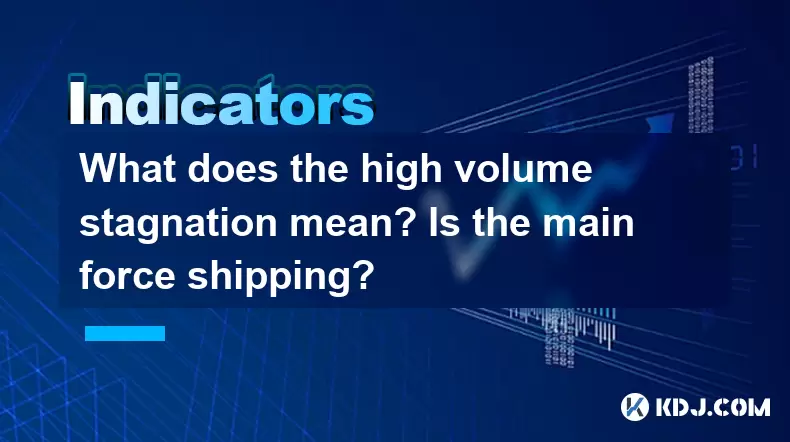
What does the high volume stagnation mean? Is the main force shipping?
In the world of cryptocurrencies, understanding market dynamics is crucial for making informed trading decisions. One phenomenon that traders often encounter is high volume stagnation. This article delves into what high volume stagnation means, whether it indicates that the main force is shipping, and how traders can interpret and react to these market conditions.
Understanding High Volume Stagnation
High volume stagnation refers to a situation in the cryptocurrency market where trading volumes are significantly high, but the price of the asset remains relatively unchanged. This can be a perplexing scenario for traders because high trading volumes typically suggest strong interest and activity in the market, which should ideally lead to price movements.
When the market experiences high volume stagnation, it indicates that there is a lot of buying and selling happening, but the forces of supply and demand are balancing each other out. This balance prevents the price from moving significantly in either direction. Traders need to understand that this phenomenon can be influenced by various factors, including market sentiment, liquidity, and the actions of large investors or "main forces."
Is the Main Force Shipping?
The term "main force" in the context of cryptocurrency trading often refers to large institutional investors or whales who have the capacity to influence market prices through their trading activities. The question of whether the main force is shipping during periods of high volume stagnation is a common concern among traders.
Shipping in trading terminology means that large investors are selling their holdings, often in large volumes, which can lead to a decrease in the asset's price. During high volume stagnation, it is possible that the main force is indeed shipping, but the impact of their selling is being offset by an equal amount of buying from other market participants.
To determine if the main force is shipping, traders can look at several indicators:
- Order Book Depth: Analyzing the order book can reveal whether there are large sell orders that could indicate shipping by the main force.
- Volume Profile: A volume profile can show where the majority of trading volume is occurring, which might indicate whether large investors are selling at certain price levels.
- On-Chain Data: Examining on-chain metrics such as large transaction volumes can provide insights into the activities of major investors.
Interpreting High Volume Stagnation
Interpreting high volume stagnation requires a nuanced understanding of market dynamics. It is important for traders to look beyond the surface-level data and consider various factors that could be contributing to the observed market conditions.
- Market Sentiment: High volume stagnation can be influenced by the overall sentiment of the market. If investors are uncertain about the future direction of the asset, they might engage in high volumes of trading without a clear consensus on price movement.
- Liquidity: High liquidity can lead to high volume stagnation if there is a large number of market participants trading small amounts, which balances out the overall price movement.
- Market Manipulation: In some cases, high volume stagnation could be a result of market manipulation by large investors who are trying to create a false sense of stability to execute their trading strategies.
Trading Strategies During High Volume Stagnation
When faced with high volume stagnation, traders need to adapt their strategies to navigate the market effectively. Here are some approaches that traders can consider:
- Range Trading: Since the price is not moving significantly, traders can engage in range trading by buying at the lower end of the range and selling at the higher end.
- Breakout Trading: Traders can prepare for potential breakouts by setting up buy or sell orders at key resistance or support levels. A breakout from the stagnation could lead to significant price movements.
- Scalping: Given the high volume, traders can engage in scalping, which involves making small profits from numerous trades throughout the day.
Technical Analysis Tools for High Volume Stagnation
Utilizing technical analysis tools can help traders gain a better understanding of high volume stagnation and make more informed trading decisions. Here are some tools that traders can use:
- Volume Indicators: Tools like the Volume Weighted Average Price (VWAP) and the On-Balance Volume (OBV) can provide insights into the relationship between volume and price movements.
- Moving Averages: Using moving averages can help traders identify trends and potential breakouts from the stagnation period.
- Candlestick Patterns: Analyzing candlestick patterns can reveal potential shifts in market sentiment and help traders anticipate price movements.
Practical Steps to Analyze High Volume Stagnation
To effectively analyze high volume stagnation, traders can follow these practical steps:
- Monitor Trading Volumes: Keep a close eye on the trading volumes of the asset in question. High volumes can indicate significant market activity, even if the price is not moving.
- Analyze Order Books: Regularly review the order book to understand the depth of buy and sell orders. This can provide clues about the intentions of large investors.
- Use On-Chain Analytics: Leverage on-chain analytics tools to track large transactions and movements of funds, which can indicate whether the main force is shipping or not.
- Set Up Alerts: Configure price and volume alerts to stay informed about potential breakouts or shifts in market conditions.
- Backtest Strategies: Use historical data to backtest trading strategies that can be effective during periods of high volume stagnation.
Frequently Asked Questions
1. Can high volume stagnation last for a long time?
High volume stagnation can persist for varying durations depending on the underlying market conditions. It can last for days, weeks, or even months if the forces of supply and demand remain balanced.
2. How can I differentiate between high volume stagnation and a consolidation phase?
High volume stagnation typically involves high trading volumes with little price movement, while consolidation phases can occur with varying volumes. Consolidation often precedes a significant price move, whereas high volume stagnation may continue without a clear breakout.
3. Are there specific cryptocurrencies more prone to high volume stagnation?
While high volume stagnation can occur in any cryptocurrency, it is more commonly observed in highly liquid assets with significant institutional interest, such as Bitcoin and Ethereum.
4. What role does market manipulation play in high volume stagnation?
Market manipulation can contribute to high volume stagnation by creating artificial stability in the market. Large investors may engage in high-volume trading to mask their true intentions and execute their strategies without causing immediate price movements.
Disclaimer:info@kdj.com
The information provided is not trading advice. kdj.com does not assume any responsibility for any investments made based on the information provided in this article. Cryptocurrencies are highly volatile and it is highly recommended that you invest with caution after thorough research!
If you believe that the content used on this website infringes your copyright, please contact us immediately (info@kdj.com) and we will delete it promptly.
- BAY Miner & XY Miners: Unlock Daily Earnings with BTC, DOGE, and LTC Cloud Mining
- 2025-06-20 10:25:12
- Decoding the Aaluxx Myth: Maya Protocol and the Smart Economy
- 2025-06-20 10:30:12
- Binance Wallet, Exclusive Token, Launch: What You Need to Know
- 2025-06-20 10:45:12
- Semler Scientific's Bitcoin Bet: Bold Move or Risky Gamble?
- 2025-06-20 10:50:12
- SHIB Eyes on Whale Activity and Shibarium Upgrade: Will It Trigger a Reversal?
- 2025-06-20 10:50:12
- Crypto Bull Run Expert Prediction: Navigating the Generational Surge
- 2025-06-20 08:25:12
Related knowledge
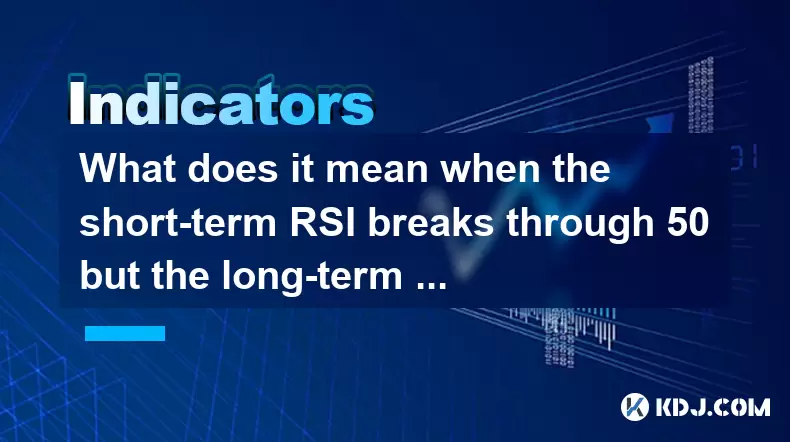
What does it mean when the short-term RSI breaks through 50 but the long-term RSI does not move in the RSI indicator?
Jun 20,2025 at 10:42am
Understanding the RSI Indicator and Its Dual-Term ApplicationThe Relative Strength Index (RSI) is a widely used momentum oscillator in technical analysis, primarily for identifying overbought or oversold conditions in an asset’s price movement. It typically operates on a scale from 0 to 100, with levels above 70 considered overbought and below 30 consid...
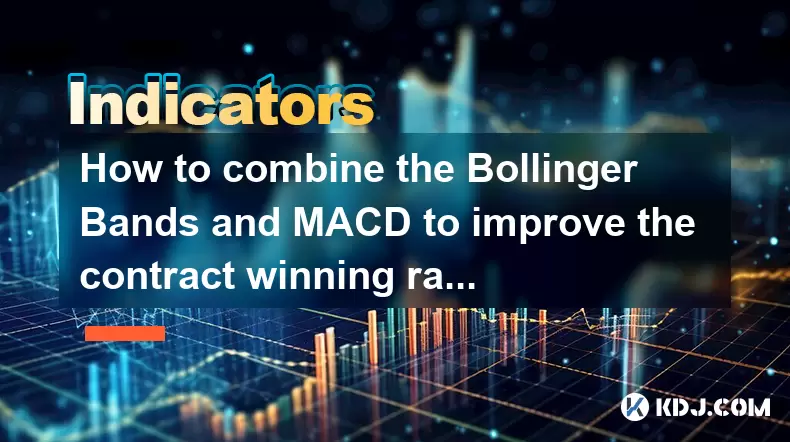
How to combine the Bollinger Bands and MACD to improve the contract winning rate?
Jun 19,2025 at 06:35pm
Understanding Bollinger Bands and MACD IndicatorsTo effectively combine Bollinger Bands and the MACD (Moving Average Convergence Divergence), it's essential to first understand what each indicator represents. Bollinger Bands consist of a middle moving average line and two outer bands that adjust based on market volatility. When prices move toward the up...
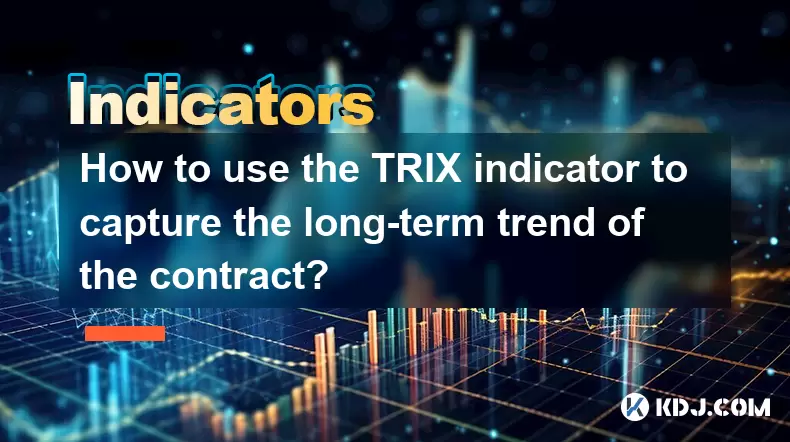
How to use the TRIX indicator to capture the long-term trend of the contract?
Jun 20,2025 at 09:14am
What Is the TRIX Indicator?The TRIX (Triple Exponential Average) indicator is a momentum oscillator used to identify oversold and overbought conditions, as well as potential trend reversals in financial markets. It is calculated by applying a triple exponential moving average to price data and then taking the percentage rate of change of that smoothed v...

How does the long lower shadow of the K line indicate the formation of the bottom of the contract?
Jun 19,2025 at 05:00am
Understanding the Long Lower Shadow in K-Line AnalysisIn cryptocurrency trading, K-line analysis plays a pivotal role in determining market sentiment and potential price reversals. A long lower shadow, also known as a long wick, is one of the most telling candlestick patterns that traders look for when assessing whether a bottom might be forming in a co...
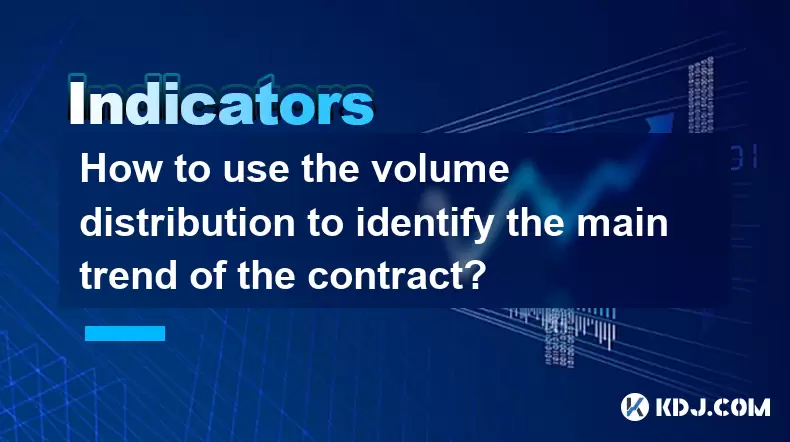
How to use the volume distribution to identify the main trend of the contract?
Jun 20,2025 at 03:56am
Understanding Volume Distribution in Cryptocurrency ContractsIn the realm of cryptocurrency trading, particularly within futures and perpetual contracts, volume distribution plays a pivotal role in deciphering market sentiment. Unlike spot markets, contract trading involves leveraged positions that can amplify both gains and losses. To navigate this com...
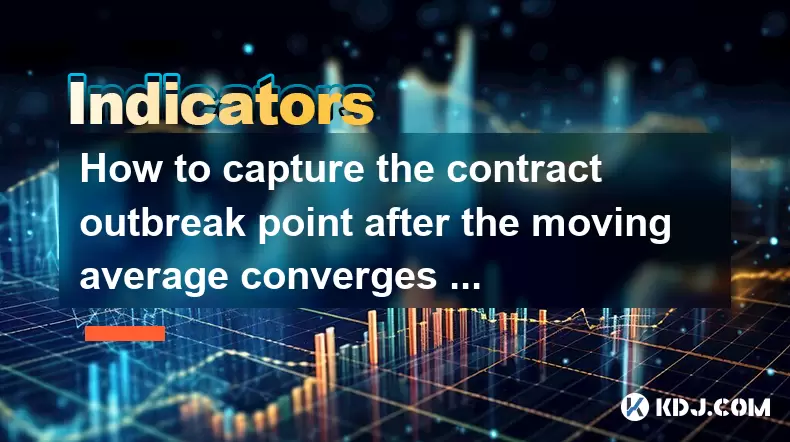
How to capture the contract outbreak point after the moving average converges and diverges?
Jun 19,2025 at 02:07pm
Understanding Moving Average Convergence and Divergence in Crypto TradingIn cryptocurrency trading, moving averages are among the most widely used technical indicators. The concept of convergence and divergence refers to how different moving averages align or separate over time. When short-term and long-term moving averages come together (converge), it ...

What does it mean when the short-term RSI breaks through 50 but the long-term RSI does not move in the RSI indicator?
Jun 20,2025 at 10:42am
Understanding the RSI Indicator and Its Dual-Term ApplicationThe Relative Strength Index (RSI) is a widely used momentum oscillator in technical analysis, primarily for identifying overbought or oversold conditions in an asset’s price movement. It typically operates on a scale from 0 to 100, with levels above 70 considered overbought and below 30 consid...

How to combine the Bollinger Bands and MACD to improve the contract winning rate?
Jun 19,2025 at 06:35pm
Understanding Bollinger Bands and MACD IndicatorsTo effectively combine Bollinger Bands and the MACD (Moving Average Convergence Divergence), it's essential to first understand what each indicator represents. Bollinger Bands consist of a middle moving average line and two outer bands that adjust based on market volatility. When prices move toward the up...

How to use the TRIX indicator to capture the long-term trend of the contract?
Jun 20,2025 at 09:14am
What Is the TRIX Indicator?The TRIX (Triple Exponential Average) indicator is a momentum oscillator used to identify oversold and overbought conditions, as well as potential trend reversals in financial markets. It is calculated by applying a triple exponential moving average to price data and then taking the percentage rate of change of that smoothed v...

How does the long lower shadow of the K line indicate the formation of the bottom of the contract?
Jun 19,2025 at 05:00am
Understanding the Long Lower Shadow in K-Line AnalysisIn cryptocurrency trading, K-line analysis plays a pivotal role in determining market sentiment and potential price reversals. A long lower shadow, also known as a long wick, is one of the most telling candlestick patterns that traders look for when assessing whether a bottom might be forming in a co...

How to use the volume distribution to identify the main trend of the contract?
Jun 20,2025 at 03:56am
Understanding Volume Distribution in Cryptocurrency ContractsIn the realm of cryptocurrency trading, particularly within futures and perpetual contracts, volume distribution plays a pivotal role in deciphering market sentiment. Unlike spot markets, contract trading involves leveraged positions that can amplify both gains and losses. To navigate this com...

How to capture the contract outbreak point after the moving average converges and diverges?
Jun 19,2025 at 02:07pm
Understanding Moving Average Convergence and Divergence in Crypto TradingIn cryptocurrency trading, moving averages are among the most widely used technical indicators. The concept of convergence and divergence refers to how different moving averages align or separate over time. When short-term and long-term moving averages come together (converge), it ...
See all articles

























































































